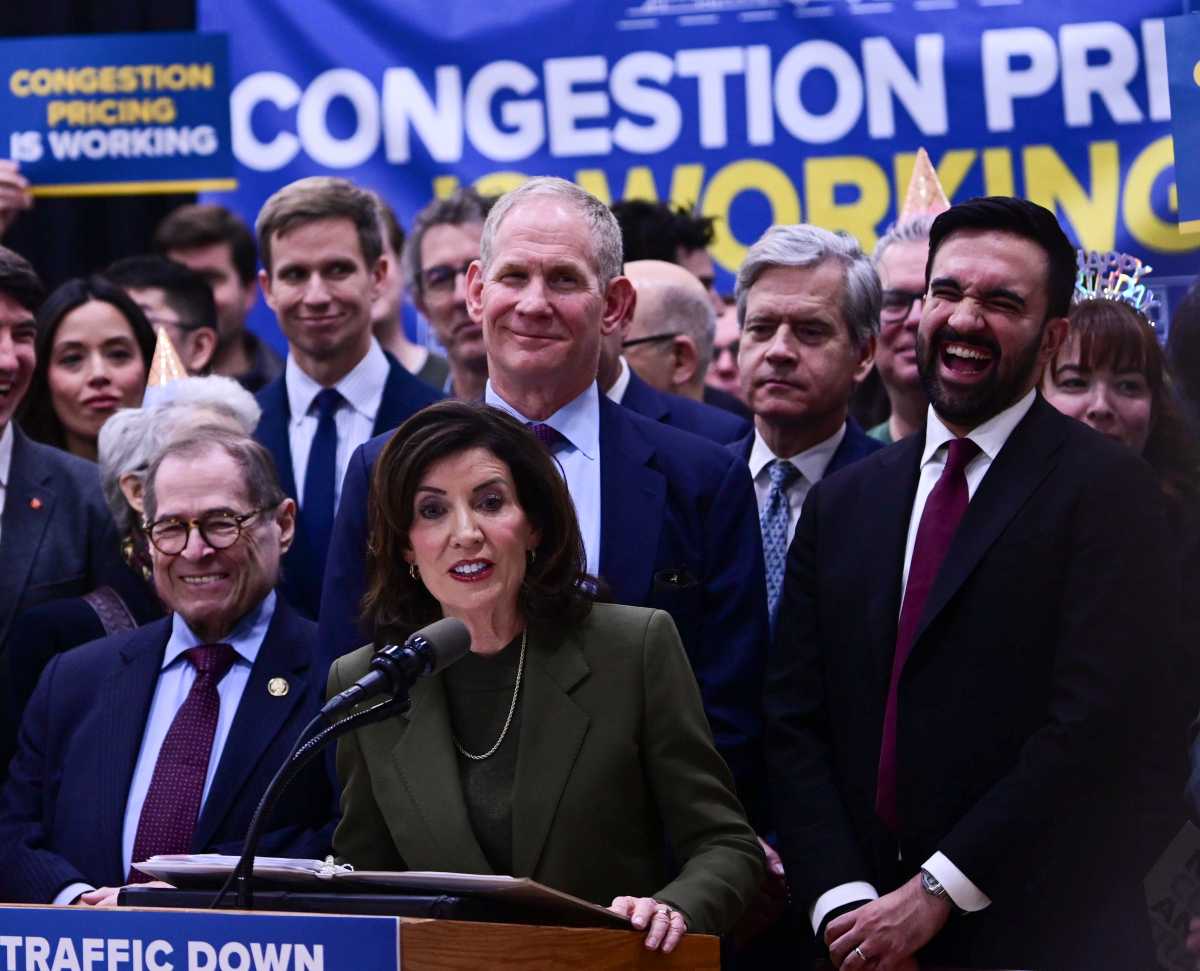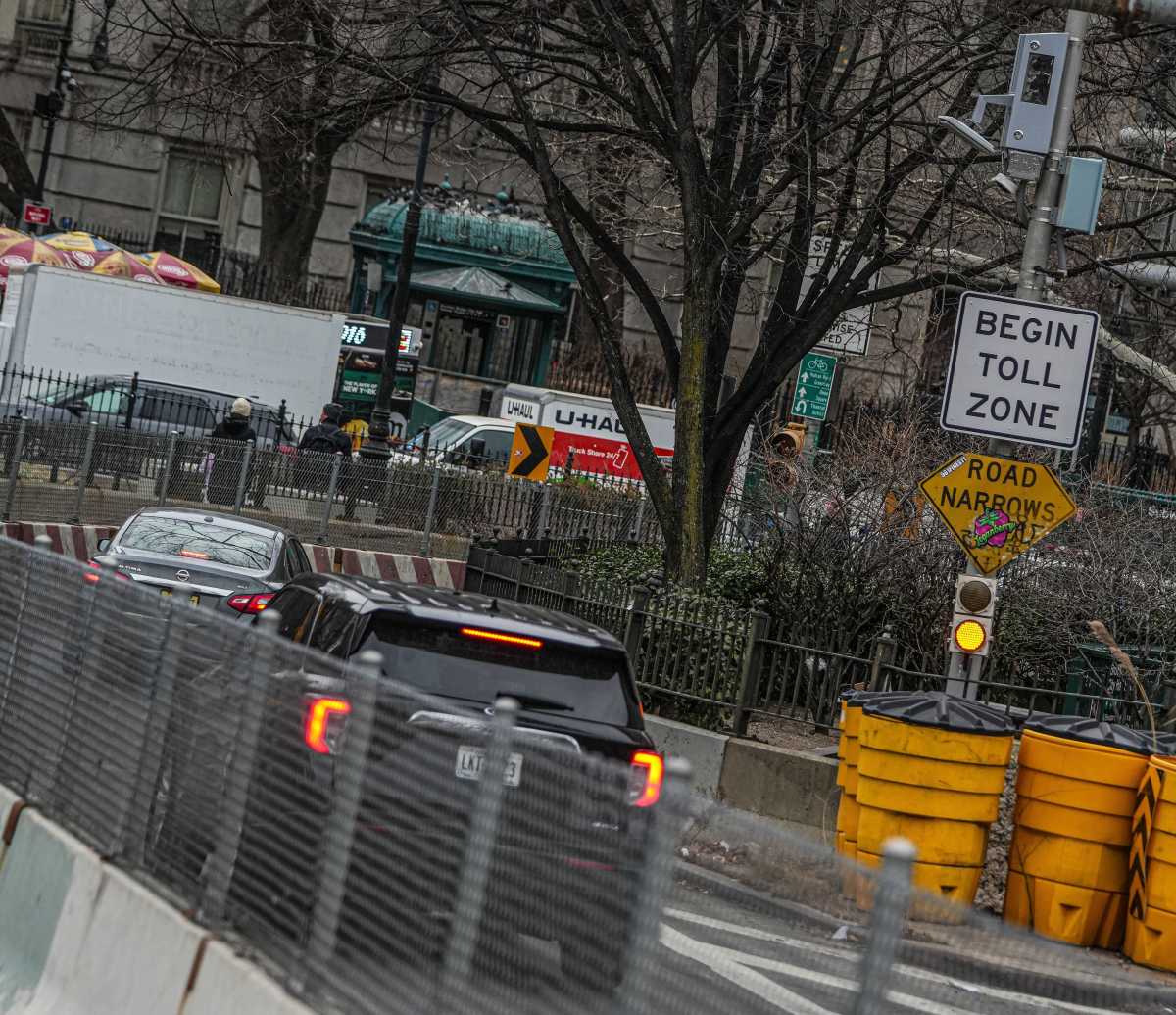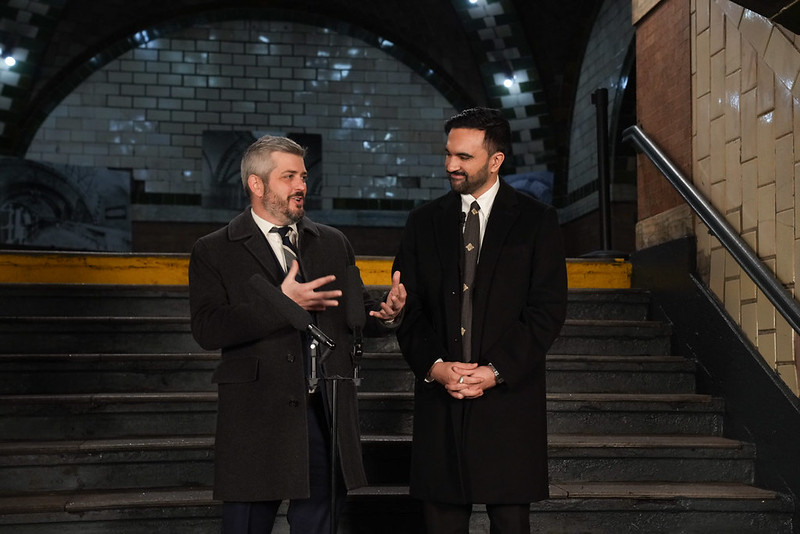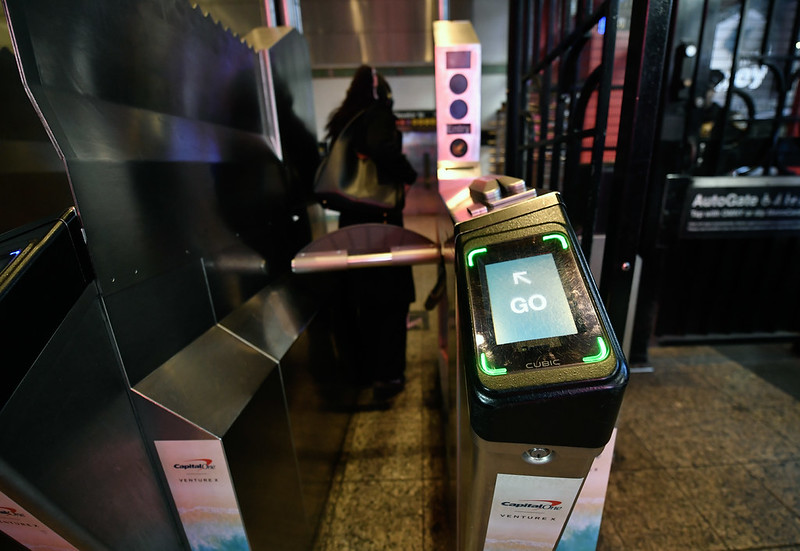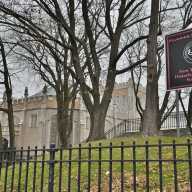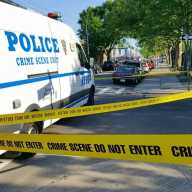By Sarina Trangle
State Assemblyman Phil Goldfeder (D-Rockaway Beach) seized on a study of reviving the Rockaway Beach LIRR spur as evidence the train had left the station.
Goldfeder said Queens College’s study projected about half a million daily riders would use the 3.5 miles of tracks between Rego Park and Ozone Park, if reactivated.
“Populations have grown in the Rockaways almost 50 percent since the closing of the old rail line. Rockaway residents and many Queens residents sadly have longer commutes to midtown Manhattan than many Nassau County residents,” Goldfeder said. “We’re asking the MTA to take the next step.”
Flanked by students, professors and transportation union members on the Flushing campus, Goldfeder suggested the study was a mandate for the Metropolitan Transportation Authority to find the roughly $700 million he estimated it would cost to retool the spur.
The fate of the Rockaway Beach line has divided the borough. Some have pushed for turning the tracks into a High Line-style park dubbed the QueensWay, while transit activists are clamoring for rail service and residents close to the railbed contend both proposals would disturb their quality of life.
Queens College professor Scott Larson said the Urban Studies Department’s analysis, which was funded by college grant funds and state money, strove for objectivity.
The study found 33.9 percent of respondents preferred using the proposal to use the railbed for trains, 28.1 percent favored the QueensWay plan, 18.1 percent sought a combination of the two ideas and 10.2 percent wanted the tracks untouched. Greenery has sprouted along the railway since it stopped carrying trains in 1962.
The inquiry determined a higher portion of those in Forest Hills, Glendale and Rego Park — 39 percent — favored reactivating the line than in the Rockaways, Richmond Hill and Woodhaven, where about 31 percent supported such efforts.
Larson cautioned against reading too much into neighborhood-specific responses because just 374 residents and 44 businesses of the nearly 6,000 targeted returned surveys.
“There are a lot of people out there who aren’t very familiar with the debate,” he said.
Both the park and rail service would likely drive down property values abutting the tracks, but otherwise hike up prices, the study found.
U.S. Rep. Jerrold Nadler (D-Manhattan), who sits on the House Transportation and Infrastructure Committee’s Highways and Transit Sub-comittee, said the opportunity for a one-seat, 30-minute ride from Manhattan to JFK Airport should not be overlooked.
“If this region decides that the restoration of this line is a priority within our general capital plan, we’ll be able over the next five, six, eight, whatever it is, years, find $700 million,” Nadler said.
The MTA declined to comment on the prospects of Goldfeder’s pitch making it into its capital plan. The agency said it was not taking a position on the spur because it did not own the property.
City Council Transportation Committee Chairman Ydanis Rodriguez (D-Manhattan) and U.S. Reps. Gregory Meeks (D-Jamaica) and Hakeem Jeffries (D-Brooklyn) have also backed the reactivation bid.
QueensWay has support from U.S. Reps. Joseph Crowley (D-Jackson Heights), Grace Meng (D-Flushing), state Assemblyman Andrew Hevesi (D-Forest Hills), state Sen. Toby Ann Stavisky (D-Flushing) and City Councilwoman Karen Koslowitz (D-Forest Hills).
Travis Terry, part of the Friends of the QueensWay group pushing the park, said the Queens College study showed support for its proposal.
“After reviewing the findings in this study, we could not be more confident in the QueensWay’s potential to improve communities,”

